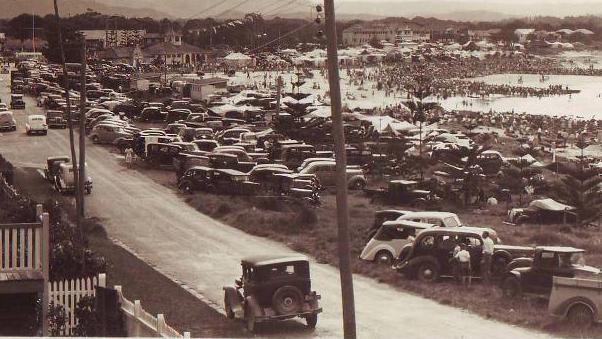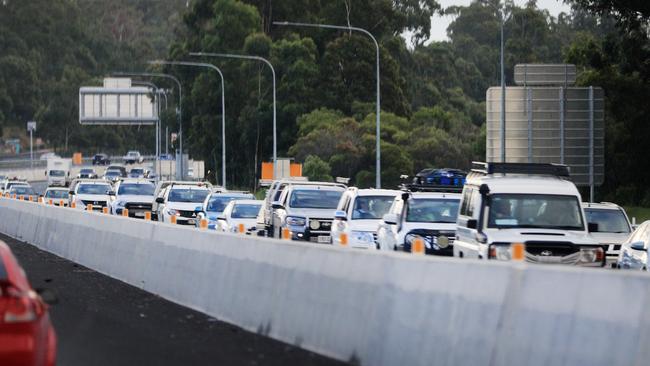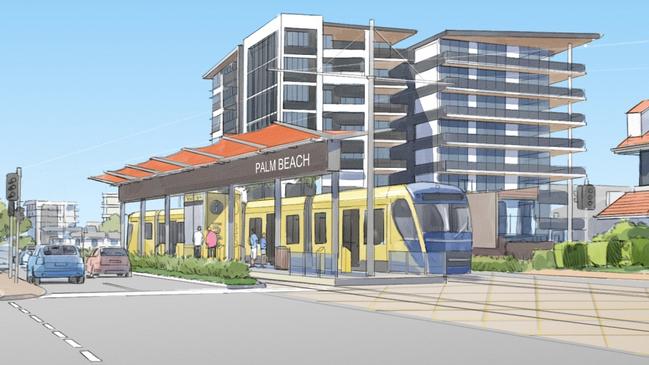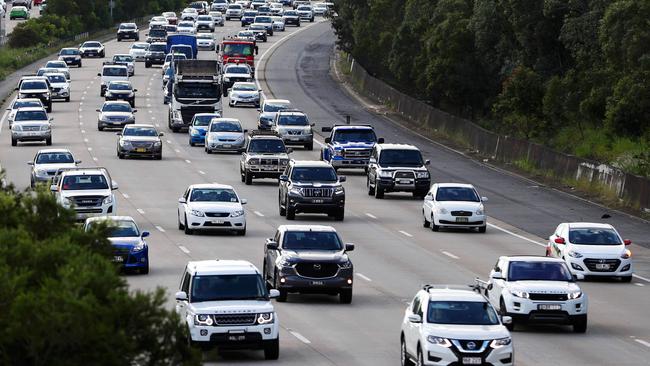Gridlock: Hundred-year-old issue still haunting Gold Coast, writes Ann Wason Moore
A century-old photo shows no sooner was the automobile invented than the first Gold Coast gridlock was born – but it could also hold clues to the solution.
Gold Coast
Don't miss out on the headlines from Gold Coast. Followed categories will be added to My News.
It’s the time-travelling proof that this city needs the tram.
A photo of Burleigh Hill from almost one hundred years ago shows that no sooner was the automobile invented, than the first Gold Coast gridlock was born.
Even in the early days of last century, the headland was a tourist hotspot.

In the decades since this historic image was taken, we’ve built more roads, more lanes and more carparks, and all we have achieved is ensuring that this same problem still exists.
It’s the actual definition of insanity – repeating the same actions (more roads) and expecting a different result (less traffic).
The inconvenient truth is that no matter how many roads we build, we’re going to fill them. That’s not an opinion, that’s simply a fact.
Decades of research, including a report by the Victoria Transport Policy Institute released just last month, show that whenever lanes are added to busy freeways, more cars show up to fill the available space. It’s a phenomenon known as “induced traffic demand.”
“Traffic congestion tends to maintain equilibrium,” states the report.

“Traffic volumes increase until congestion delays discourage additional peak-period trips. If road capacity expands, peak-period trips increase until congestion again limits further traffic growth.”
In other words, if we build it … the cars will come.
That’s why it’s really not such a big deal if the Gold Coast Highway is reduced to two lanes in parts of Palm Beach or expanded to six. Traffic is essentially self-regulating, it will be no better and no worse than it is right now. Which is pretty bloody bad.
The point here is that it’s time to stop arguing about whether or not the light rail should exist and what route it should take and figure out how we are going to prevent our city being entirely choked by traffic. Because roads are just not the answer. And while buses are great, they use roads.

However, those who oppose the light rail insist that it will not solve all of the city’s issues. And they are absolutely right.
But it’s a key component in the total network that we need to keep the Coast moving.
Attending the Gold Coast Central Chamber of Commerce’s Transportation Forum: Transporting Cities into the Future lunch last week, it was a relief to hear that our city and state leaders are already streets ahead when it comes to solutions, no matter how much some residents would like to drag us back to gridlock.
One of the major criticisms we hear about the light rail is that it will provide no benefit to those residents who live in the western suburbs.
But guess what? That problem is well on its way to being solved.

Surfside Buslines recently started a two-year on-demand TransLink bus trial for Nerang, Highland Park and Pacific Pines.
Using the TransLink On Demand app, residents can order a bus almost like an Uber, allowing pre-booking and real-time tracking and updates, with the service taking them to transport hubs, essential services and shopping centres.
If the trial is successful, hopefully we will soon see these Poncho buses connecting western ‘burbs to light rail hubs – reducing the number of cars on the road and the need for parking.
And Lord knows we need it.
Speaking at the Transport Forum, Matthew Burke from Griffith University’s Cities Research Institute says the average number of people riding in each car on the Gold Coast is just 1.1.
Add in the future of autonomous or driverless cars, and we could soon be heading to zero.

So thank goodness the investment this city has made into its public transportation network is already paying dividends.
RACQ’s inaugural public transport survey shows Gold Coast residents are leading the state when it comes to public transport use – with 80 per cent of respondents regularly leaving their car at home.
And what was the most popular mode of public transport? Light rail.
Meanwhile, the fact that a small 334 square metre commercial space in the Nobby Beach strip just sold for $3.475m, up $1 million in just over a year, is proof that businesses see good sense and cents in the light rail – even with the expected disruption of construction.
If only we could just time travel to the future when it’s all finished.





